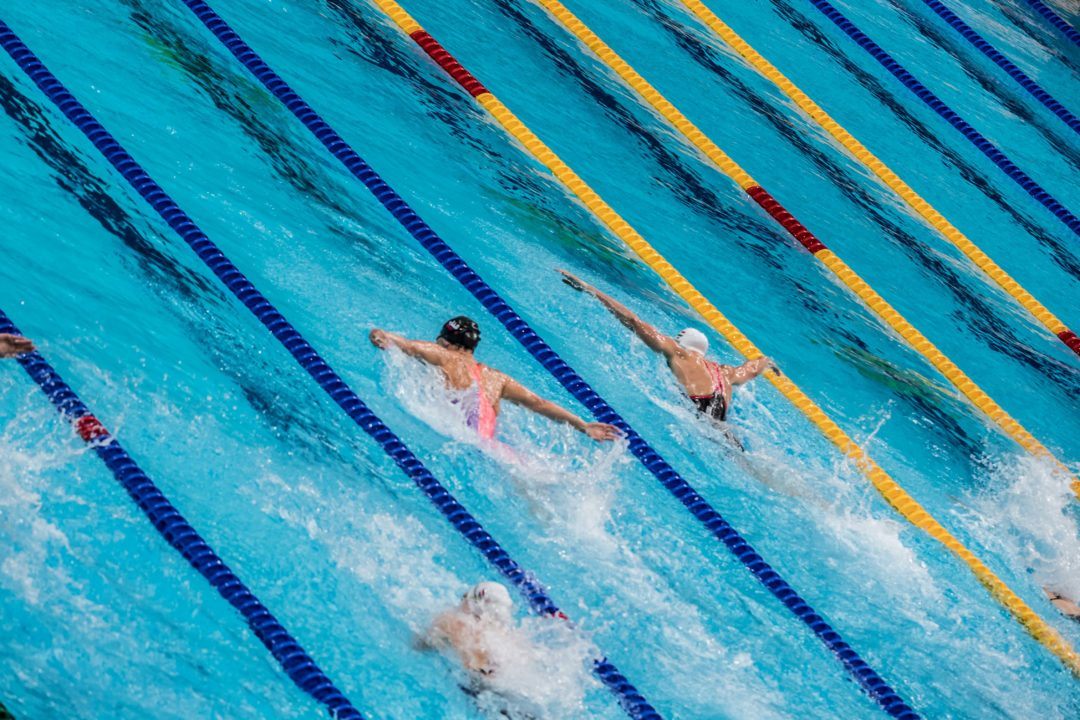Courtesy: Zachary Kropp
Butterfrog is the archaic form of butterfly that was swum throughout much of the 1930s and 1940s. Technically, Butterfrog is simply a butterfly pull with a breaststroke kick. While you rarely see this stroke outside of specific aquatic situations, I believe it is still relevant for any contemporary swimmer.
The stroke of the butterfly evolved out of experimentation with breaststroke. Originally, butterfly was simply breaststroke with an above-water arm recovery. In fact, Butterfly wasn’t an official stroke for World Aquatics until 1952. This early form of butterfly has been affectionately named butterfrog. In the late 1930s, swimmers started experimenting with a dolphin kick instead of the frog kick. This evolution made butterfrog turn into butterfly.
Butterfly today is taught with the dolphin kick, but the old butterfrog style still has its place. It is currently allowed in US Masters Swimming meets. On page 3 of the US Masters Rulebook, it states “The breaststroke kick may be used exclusively or interchangeably with the dolphin kick while doing the butterfly stroke at any time during the race. Only one breaststroke kick is permitted per arm pull, except that a single breaststroke kick is permitted prior to the turn and the finish without an arm pull. After the start and after each turn, a single breaststroke kick is permitted prior to the first arm pull.” US Masters Swimming is the only current organization that allows the use of butterfrog.
This old form of butterfly has many reasons to be kept alive. Here are a few:
1. It is a less exhausting form of butterfly. An athlete will be able to keep doing butterfrog for longer intervals than with butterfly. This may be helpful for older athletes as well as new swimmers.
The stroke would be the most effective method for getting young beginners to compete in butterfly. It would allow them to grasp the technical side of the technique while avoiding the issues of exhaustion. I would rather a swimmer race butterfrog with good timing and technique than swim a poor butterfly.
2. It can be a helpful learning aid for butterfly and breaststroke. Both of these strokes require an undulating motion and correct timing. Butterflyers and breaststrokers will both benefit from working with the timing and the undulation.
This stroke is also helpful for getting breaststrokers to work on their glide after a stroke.
3. It is a unique artifact of swimming history. I am a history teacher, which means that I believe everything old is worth preserving.
For athletes that can manage a more intensive workout, butterfrog is probably not suited for their needs, but athletes that would still like to engage with butterfly in a less intensive manner may find use in the butterfrog stroke. Butterfrog should not be used in competitions for athletes who are capable of swimming dolphin kick butterfly; however, it is a perfect competition stroke for those that are older in age or new to the sport.
Here’s a how-to video courtesy of the Champions Mojo Podcast YouTube channel:
 ABOUT ZACHARY KROPP
ABOUT ZACHARY KROPP
Zachary Kropp is an educator and swimmer from Southgate, Michigan! He has been involved with swimming since he was about 10 years old! He is currently coaching recreational and school teams in the southeastern part of Michigan.


I seeeee youuuu I am your STUUUUUDENNNTTT
Ha! Im not a swimmer but I’m an Olympian. Ha! I love this. Ha! My son swims here. Ha! I never swam until 3 but started at 4. Ha! Live Laugh Love Life And Swim. Ha!
Waterpolo players use it but aim for hight during training. Also use frog kick for back stroke and crawl to get higher water position and control.
Ha! My son does summer swim and is a natural breaststroker, but also loves butterfly. For a couple summers, the coaches were hesitant in having him swim fly in A meets, because he sometimes did breaststroke kicks by accident and they thought he might get DQed. It never happened to him, but I saw it happen to other kids. Kinda sad to be DQed for accidentally doing part of a slower stroke, but I guess I understand why they have the rules (except for Masters.)
I believe a better variation is the back/fly/frog – on your back, double arm fly-like stroke and a breast kick. I use it for cooling down after my workouts.
In the 9th you still use the breaststroke kick. This was 1955. Of course in 1958 you could swim the breaststroke underwater as long as you wanted. The next year it only allowed one stroke underwater
Butterfrog. Sounds like a kids’ TV show.
Is there anyone–anyone sane and with an ounce of pride–on earth who would dearly love to be known as the Olympic butterfrog champion?
Could call it Woggy Frog, Creeper Stroke or Ugly Bugley. Guess because I responded to the article, I am one of the swimswamgammers.